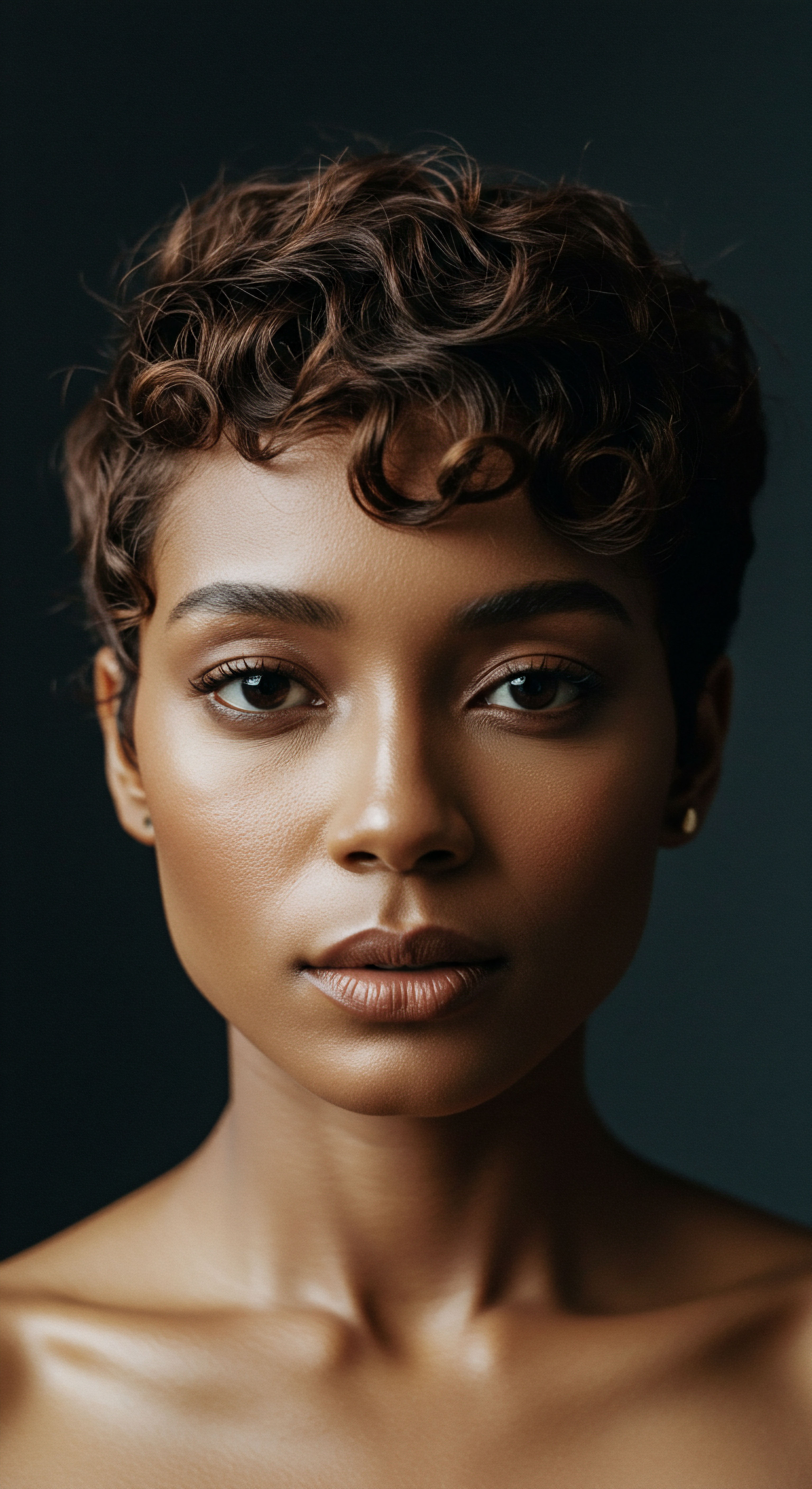
Roots
As the moon ascends, painting the world in hues of silver and shadow, a quiet strength begins to reveal itself—the profound connection between our textured strands and the world they navigate. This nocturnal transformation, far from a mere cosmetic ritual, speaks to an ancient understanding of preservation, a gentle tending to the very fibers that crown us. Our hair, a living testament to heritage and resilience, faces a symphony of environmental pressures throughout the day.
These forces, often unseen, whisper across our cuticles and settle upon our scalps, subtly altering the delicate balance that sustains vitality. To truly appreciate the nightly devotion, one must first understand the intrinsic architecture of our hair and the external aggressors it bravely encounters.
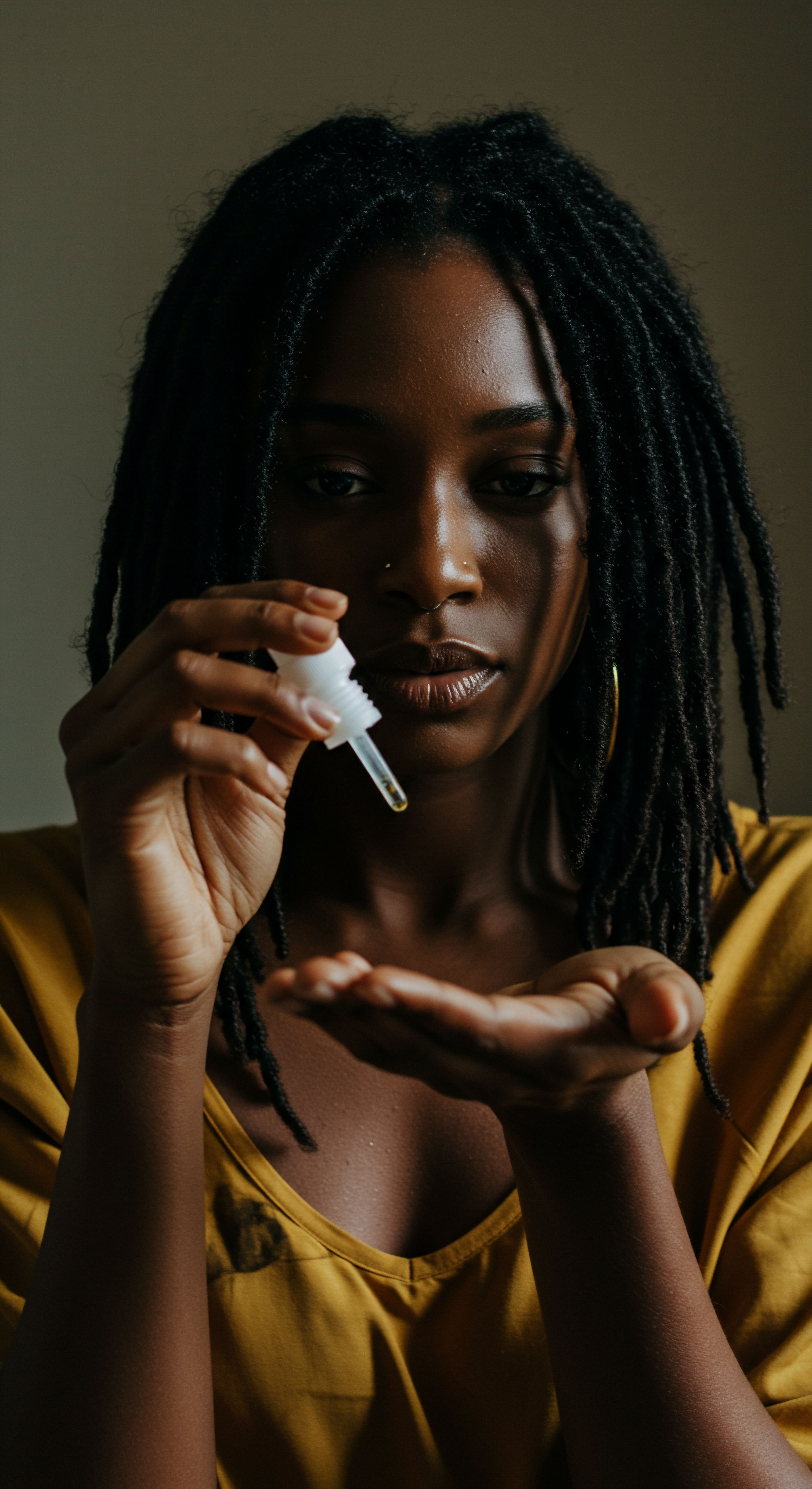
Hair Anatomy and Its Textured Expressions
The hair shaft, seemingly simple, is a marvel of biological engineering, composed primarily of keratin proteins. Each strand, emerging from its follicle, comprises three distinct layers ❉ the medulla, the cortex, and the cuticle. The innermost Medulla, a soft, often discontinuous core, may be absent in finer hair types. Encasing it, the Cortex forms the bulk of the hair, housing the melanin responsible for color and providing the strand’s strength and elasticity through its tightly packed keratin bundles.
It is the outermost layer, the Cuticle, a shingle-like arrangement of overlapping cells, that serves as the hair’s primary shield against the world. These tiny, translucent scales, when healthy, lie flat, reflecting light and locking in moisture.
For textured hair, this architectural blueprint takes on a unique, often breathtaking, complexity. Unlike straight strands with their circular cross-section, coily and kinky hair often possesses an elliptical or flattened shape. This structural distinction results in natural twists and turns along the hair shaft, creating points of vulnerability where the cuticle layers may lift or thin. These inherent curves, while contributing to the hair’s magnificent volume and distinct beauty, also present a greater surface area for environmental elements to interact with and potentially disrupt.

Environmental Stressors and Hair’s Daily Dance
Our hair, much like our skin, is in constant dialogue with its surroundings. The air we breathe, the sun’s embrace, the very friction of daily life—all leave their mark. Understanding these aggressors is the first step toward crafting a truly protective nightly regimen.
- Ultraviolet Radiation ❉ The sun’s powerful rays, while life-giving, also bombard hair with UV radiation. This energy can degrade the melanin pigments, leading to color fade, and, more critically, induce oxidative stress that damages the keratin proteins within the cortex and the protective lipids on the cuticle. Over time, this results in weakened strands, increased porosity, and a diminished ability to retain moisture.
- Airborne Particulate Matter ❉ Urban environments, with their bustling energy, often carry a silent burden ❉ microscopic particulate matter (PM). These tiny fragments of dust, soot, and industrial emissions, along with gaseous pollutants, settle upon the hair and scalp. They can adhere to the cuticle, causing roughness, and, concerningly, penetrate the hair fiber to inflict chemical harm upon its protein structure. This external deposition contributes to a dull appearance and can even compromise the scalp’s delicate ecosystem.
- Humidity Fluctuations ❉ The atmospheric dance of moisture plays a significant role in hair behavior. High humidity can cause hair to absorb excess water, leading to swelling and cuticle lifting, often resulting in frizz for textured hair. Conversely, dry air can strip hair of its vital moisture, leaving it brittle, prone to breakage, and lacking suppleness. The constant shift between these extremes challenges the hair’s ability to maintain its internal hydration.
- Mechanical Friction ❉ Throughout the day, our hair endures countless instances of mechanical stress. Brushing, styling, even the gentle rub against clothing or furniture can cause friction. For textured hair, where strands naturally interlock, this friction can lead to tangles, knots, and ultimately, breakage. This cumulative wear and tear, though seemingly minor, can significantly compromise the hair’s structural integrity over time.
The nightly care of hair is a profound conversation with the elements, a gentle tending to the very fibers that crown us.

Hair’s Intrinsic Resilience and the Night’s Quiet Promise
Despite the constant barrage of environmental challenges, hair possesses a remarkable capacity for resilience. The cuticle, when intact, acts as a formidable barrier. The natural oils, or sebum, produced by the scalp’s sebaceous glands, coat the hair shaft, providing a layer of natural lubrication and a hydrophobic shield that helps repel water and environmental contaminants. Melanin, the pigment that gives hair its color, also offers some degree of photoprotection against UV radiation.
However, these natural defenses are not infallible. Continuous exposure to aggressors can overwhelm them, leading to compromised hair health. This is where the wisdom of nighttime routines truly comes into its own. As we surrender to sleep, our bodies enter a state of repair and regeneration.
This quiescent period offers a unique window of opportunity for hair to recover from the day’s stresses, to absorb restorative treatments without interruption, and to be shielded from the very elements that challenged it hours before. It is during these hours of rest that we can actively support our hair’s inherent capacity for strength and vibrancy, preparing it anew for the dawn.

Ritual
The quiet moments before sleep, when the world outside softens its clamor, present a profound opportunity to engage with our hair in a way that transcends mere maintenance. This is not simply about ticking off tasks; it is about cultivating a sacred space for restoration, a ritual that actively participates in the hair’s nightly renewal. Moving beyond the foundational understanding of hair’s vulnerability, we now turn to the applied wisdom, the intentional practices that transform vulnerability into fortified strength.

The Philosophy of Nightly Care
Nighttime hair care shifts the focus from damage control to active restoration. During our waking hours, hair is exposed to a continuous onslaught of friction, styling, and environmental aggressors. Sleep offers a protected environment, a canvas upon which targeted treatments can perform their deepest work.
The philosophy here centers on creating a barrier against physical wear, infusing strands with sustained moisture, and providing the scalp with the nourishment it requires for optimal hair growth. This deliberate, consistent approach forms a protective cocoon around each strand, allowing it to recover and prepare for the coming day.

Protective Styling as a Nocturnal Embrace
One of the most powerful tools in the nighttime hair care arsenal is the strategic use of protective styles. These styles minimize friction, reduce tangling, and keep strands neatly contained, preventing unnecessary stress against pillows or bedding.
- Loose Braids and Twists ❉ Gently braiding or twisting hair into one or several sections before bed significantly reduces mechanical friction. This prevents the individual strands from rubbing against each other or against sleep surfaces, which can lead to cuticle damage and breakage. For textured hair, this also helps to maintain curl pattern definition and minimize frizz upon waking.
- The Pineapple Method ❉ For those with looser curls or waves, gathering hair into a high, loose ponytail at the crown, resembling a pineapple, keeps the bulk of the hair elevated off the neck and pillow. This technique helps to preserve volume and minimize crushing of the curl pattern, reducing the need for extensive restyling in the morning.
- Bantu Knots and Pin Curls ❉ These smaller, more defined styles not only protect the hair but can also serve as a heat-free method for setting curls. By securing small sections of hair into compact knots or coils, they are completely encased and protected from environmental exposure and friction throughout the night.
Nightly care transforms vulnerability into fortified strength, actively participating in the hair’s renewal.

Material Choices for Serene Slumber
The surface upon which our hair rests plays a far more significant role than often considered. The fabric of our pillowcases or head coverings can either exacerbate damage or provide a sanctuary for our strands.
Traditional cotton pillowcases, while comfortable, possess a rough, absorbent surface. This roughness creates friction against hair strands, leading to tangles, frizz, and breakage, especially for delicate textured hair. The absorbent nature of cotton also draws moisture from the hair, leaving it dry and more susceptible to damage.
| Material Cotton |
| Texture Rough, fibrous |
| Moisture Interaction Absorbent, draws moisture |
| Benefits for Hair Inexpensive, common |
| Material Silk |
| Texture Smooth, tightly woven |
| Moisture Interaction Non-absorbent, retains moisture |
| Benefits for Hair Reduces friction, preserves moisture, minimizes tangles |
| Material Satin |
| Texture Smooth, synthetic weave |
| Moisture Interaction Less absorbent than cotton, helps retain moisture |
| Benefits for Hair Reduces friction, more affordable than silk, minimizes tangles |
| Material Choosing a smooth, non-absorbent material like silk or satin significantly enhances nighttime hair protection. |
Silk and satin, conversely, offer a dramatically different experience. Their smooth, tightly woven surfaces allow hair to glide effortlessly, drastically reducing friction and preventing tangles and breakage. Critically, these materials are far less absorbent than cotton, meaning they do not wick away the hair’s natural oils or applied products.
This allows moisture to remain within the hair shaft, supporting hydration and the efficacy of leave-in treatments. Opting for a silk or satin pillowcase, or donning a silk or satin bonnet, is a simple yet profoundly impactful adjustment to any nighttime routine.

Moisture Sealing and Nourishment Techniques
Beyond physical protection, nighttime offers an extended period for deep conditioning and moisture sealing. This is the time to replenish what the day has depleted and to build a lasting shield.
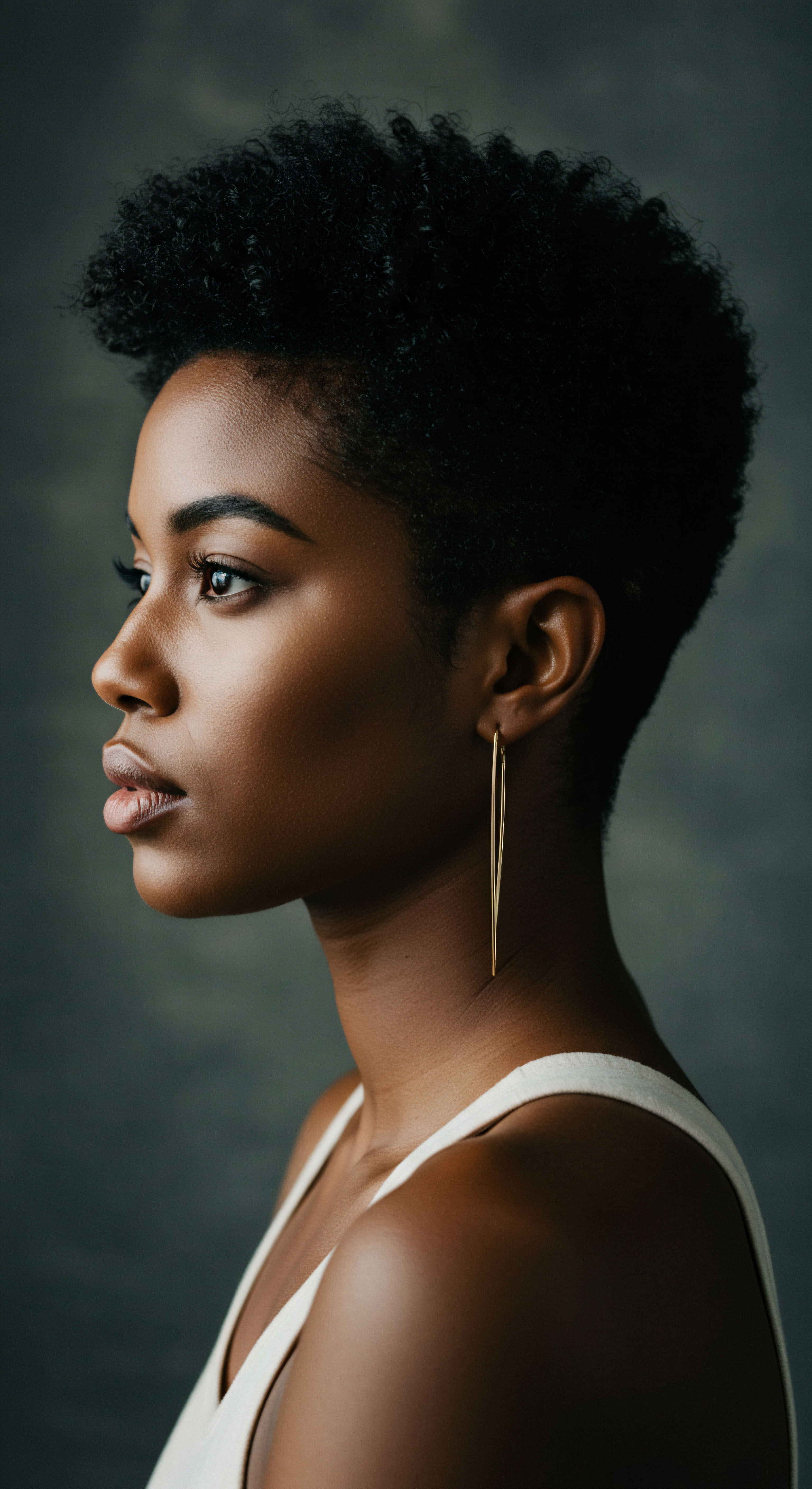
Layering for Sustained Hydration
The application of leave-in conditioners, oils, and creams before bed creates a multi-layered moisture barrier. Techniques such as the LCO Method (Liquid, Cream, Oil) or LOC Method (Liquid, Oil, Cream) are particularly effective for textured hair.
- Liquid ❉ A water-based leave-in conditioner or a light mist of water provides the initial hydration.
- Cream ❉ A rich cream or styling milk then helps to seal in that moisture and provide softness.
- Oil ❉ Finally, a natural oil, such as jojoba, argan, or castor oil, creates an occlusive layer that locks everything in, preventing moisture evaporation throughout the night. This external coating also acts as a physical buffer against environmental elements.
This layering approach ensures that the hair remains hydrated for longer periods, reducing dryness and brittleness, which are exacerbated by environmental stressors.

The Importance of Scalp Care
The health of our hair begins at the scalp. Nighttime is an opportune moment to address scalp concerns and promote a healthy environment for hair growth. Gentle scalp massages can stimulate blood circulation to the follicles, delivering vital nutrients.
The application of lightweight, nourishing scalp serums or oils, particularly those with soothing or antioxidant properties, can calm irritation, balance sebum production, and fortify the scalp’s barrier against environmental pollutants that may have accumulated during the day. This comprehensive approach to nighttime care, embracing both physical protection and deep nourishment, transforms sleep into an active, restorative period for our hair.

Relay
To consider the protection of our hair from environmental stress as a simple act of covering it or applying products would overlook the intricate, multi-dimensional dialogue occurring between our bodies, our hair, and the world around us. This final exploration invites us to delve into the less apparent complexities, to understand how science, cultural practices, and our own biological rhythms converge in the quiet hours of the night. It is here, in the convergence of biological science and lived experience, that the profound impact of nighttime hair routines truly reveals itself.
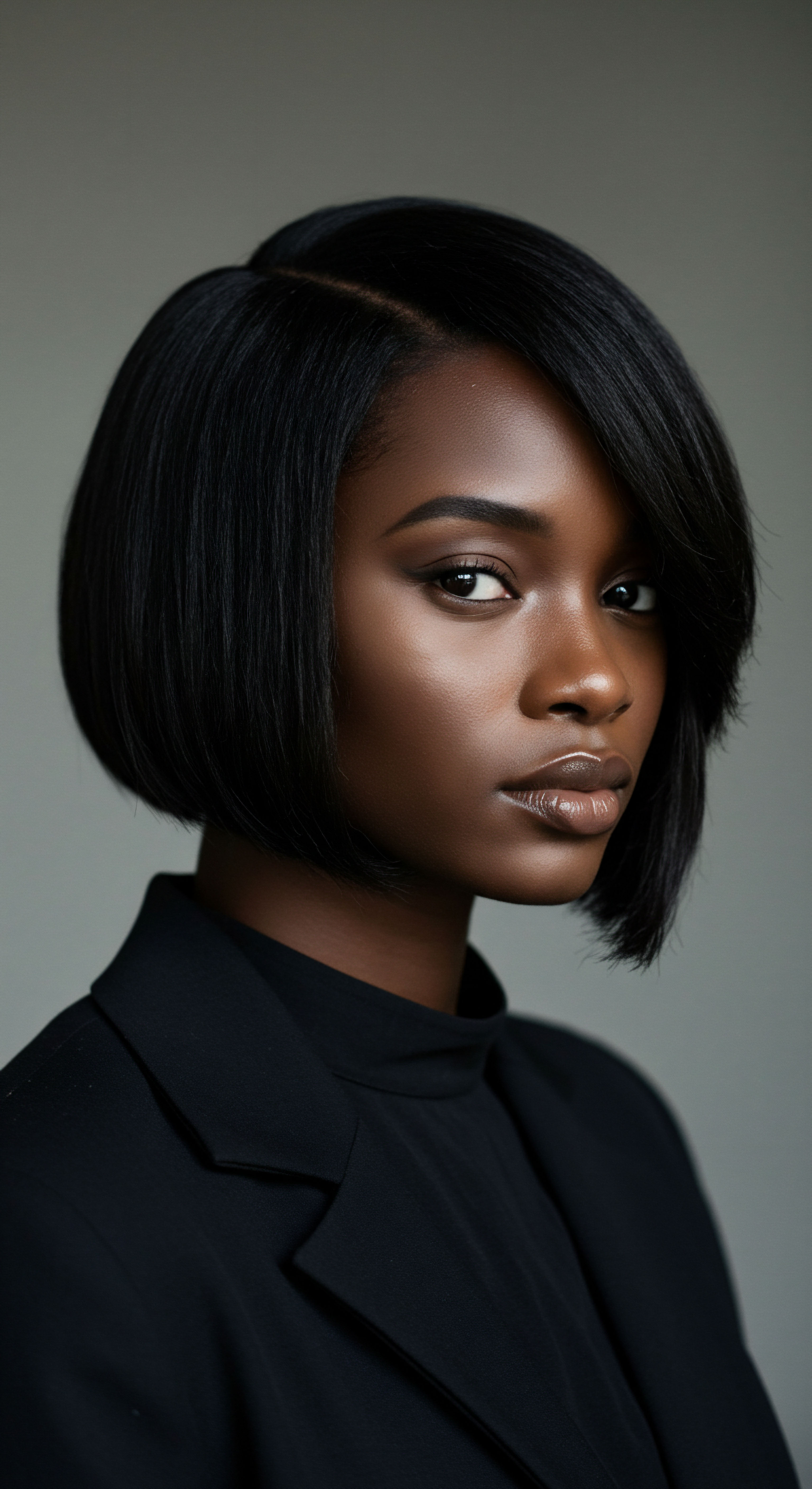
The Scalp Microbiome and Environmental Interplay
Our scalp, a living ecosystem, hosts a diverse community of microorganisms, collectively known as the scalp microbiome. This delicate balance of bacteria, fungi, and other microbes plays a crucial role in maintaining scalp health, acting as a first line of defense against pathogens and environmental aggressors. However, exposure to airborne pollutants can significantly disrupt this microbial harmony. Particulate matter, heavy metals, and volatile organic compounds (VOCs) deposited on the scalp can alter its pH, increase oxidative stress, and promote the growth of opportunistic microorganisms, leading to inflammation, itching, and conditions such as seborrheic dermatitis.
During the day, these pollutants accumulate, challenging the microbiome’s equilibrium. Nighttime routines, particularly those involving gentle cleansing and the application of soothing, balancing scalp treatments, offer an opportunity to mitigate this disruption. By removing accumulated pollutants and supporting a healthy microbial environment, we allow the scalp to recalibrate, reducing inflammation and reinforcing its natural barrier function. This often-overlooked aspect of nighttime care is a critical component in safeguarding hair health from its very source.

Chronobiology of Hair ❉ Circadian Rhythms and Repair
Our bodies operate on a sophisticated internal clock, known as circadian rhythms, which regulate a multitude of physiological processes, including those within our hair follicles. Hair growth and repair are not static processes; they fluctuate throughout a 24-hour cycle. During the day, hair follicles are more exposed to external stressors, and their primary focus may be on protection.
As night falls, and the body enters a state of rest, there is a shift towards regenerative processes. Cellular repair mechanisms are often heightened, and metabolic activity can be optimized for rebuilding and strengthening.
This biological rhythm underscores the significance of nighttime hair routines. When we apply nourishing treatments—whether it is a protein mask, a moisturizing leave-in, or a stimulating scalp serum—during these hours, we are potentially aligning our care with the hair follicle’s natural repair cycle. The active ingredients have an extended, undisturbed period to penetrate and work their magic, supporting the hair’s inherent capacity for self-renewal and resilience against the cumulative damage of daily environmental exposure.
Nighttime routines offer an opportunity to mitigate pollution disruption, allowing the scalp to recalibrate and reinforce its natural barrier function.

The Unseen Impact ❉ Hair Protein Degradation by Urban Pollution
Beyond the visible dullness or frizz, environmental pollutants inflict damage at a molecular level, fundamentally altering the hair’s structural integrity. Research has illuminated the specific mechanisms through which airborne particulate matter (PM) contributes to this degradation.
A study presented at the 28th EADV Congress in Madrid revealed a concerning link between exposure to common air pollutants, such as PM10 and diesel particulate, and the decrease of specific proteins vital for hair growth and retention. Researchers exposed human follicle dermal papilla cells (HFDPCs) to varying concentrations of these pollutants. After 24 hours, they observed a dose-dependent decrease in the levels of β-Catenin, a protein central to hair growth and morphogenesis. Furthermore, the levels of cyclin D1, cyclin E, and CDK2—proteins responsible for hair growth and retention—also diminished with increased pollutant exposure.
This indicates that pollution does not merely sit on the hair surface; it can actively interfere with the biological processes that underpin healthy hair cycles. When these growth-regulating proteins are compromised, the hair’s ability to regenerate and sustain itself is weakened, potentially leading to increased shedding or thinning over time.
Further insights from a study published in Scientific Reports examined the ultrastructural degradation of hair fibers in women living in cities with distinct air pollution profiles. Using transmission electron microscopy, researchers observed an accelerated increase in cortical damage—the degradation of the hair’s inner protein structure—in hair samples from more polluted urban environments. This damage manifested as an increase in “white areas” or empty zones within the cortex, indicating a compromised internal structure that makes the hair more susceptible to breakage and overall fragility. This evidence points to a silent, yet significant, assault on hair’s very foundation by pervasive environmental elements.
These findings underscore the profound importance of nighttime routines as a countermeasure. While we cannot control the air we breathe during the day, the protected environment of sleep, coupled with targeted treatments, allows the hair and scalp to engage in essential repair processes, potentially mitigating the long-term cumulative effects of this molecular degradation.
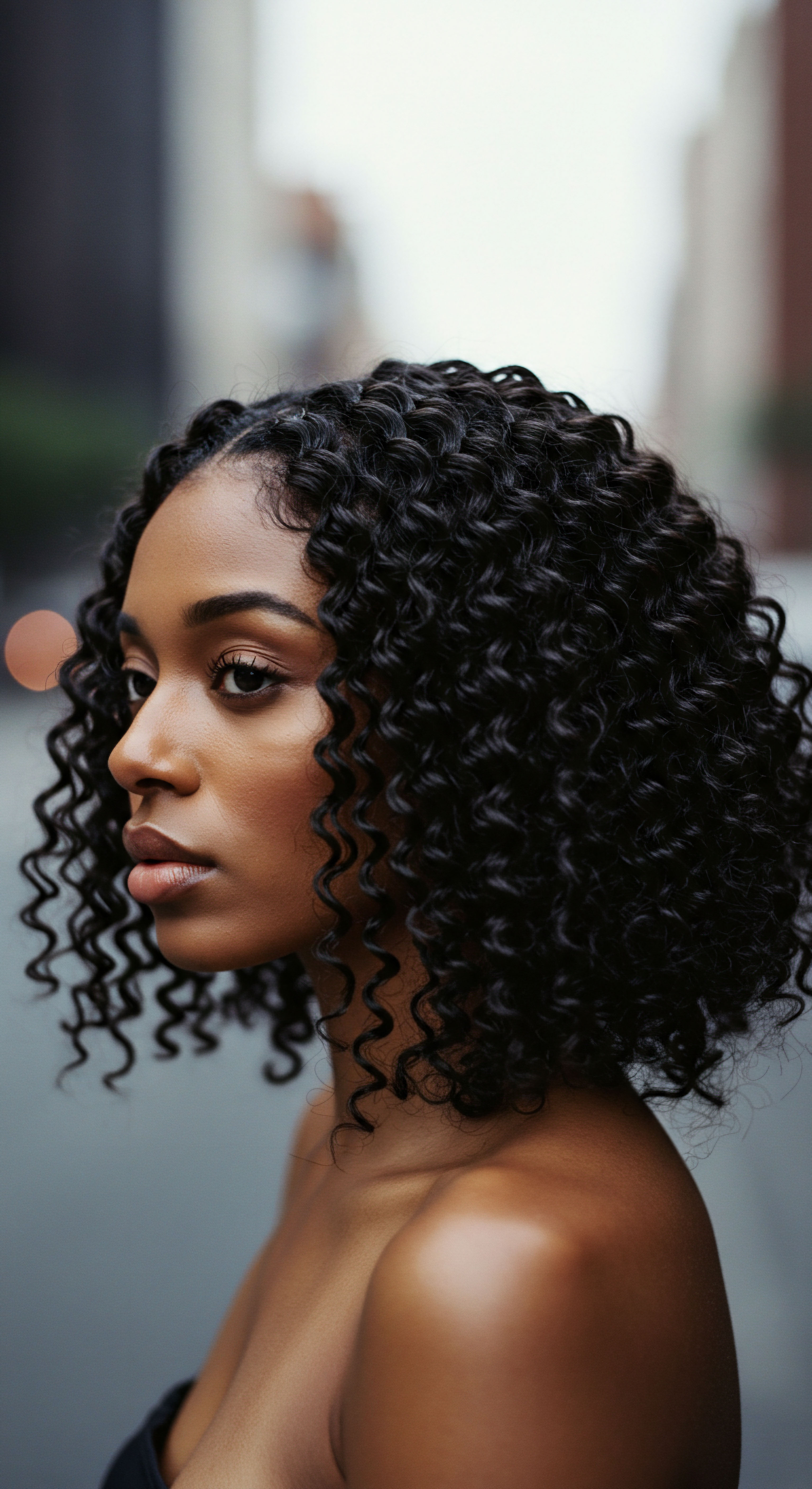
The Psychosocial Aspect of Hair Rituals
Beyond the scientific intricacies, the act of engaging in a nighttime hair routine carries significant psychosocial weight. For many, particularly within textured hair communities, hair care is not just a chore; it is a ritual passed down through generations, a connection to cultural heritage, and a profound act of self-care. The deliberate motions of detangling, moisturizing, and styling before bed can become a meditative practice, a quiet moment of reflection and grounding in a fast-paced world. This intentional pause can reduce daily stress, which itself has known implications for hair health.
The feeling of caring for one’s hair, seeing its resilience, and honoring its unique texture can foster a sense of well-being and self-acceptance. This emotional and cultural resonance adds another layer of protection, strengthening not just the hair, but the spirit of the individual.

Reflection
As the final whispers of the night give way to the first hints of dawn, the true depth of our nighttime hair routines comes into focus. It is a quiet symphony of science and tradition, a deliberate act of care that extends beyond mere aesthetics. We have traversed the microscopic landscape of the hair shaft, explored the unseen battle against environmental aggressors, and touched upon the profound biological rhythms that guide our hair’s nightly renewal.
The commitment to protect our textured strands during slumber is a testament to understanding their unique needs, a gentle yet powerful rebellion against the forces that seek to diminish their vibrancy. It is a celebration of resilience, a nod to ancestral wisdom, and a personal affirmation of well-being, ensuring that each morning, our hair awakens not just refreshed, but profoundly fortified for the day ahead.

References
- R. G. D’Souza, & J. L. C. De La Rosa. (2020). Hair Care and Styling ❉ A Comprehensive Guide. Wiley-Blackwell.
- S. K. Gupta, & K. G. Singh. (2018). Hair Science and Hair Care ❉ A Practical Approach. Springer.
- Kwon, H. C. et al. (2019). Exposure to common air pollutants such as particulate matter (PM10/PM2.5) is linked to hair loss in humans. Presented at the 28th EADV Congress, Madrid.
- C. R. Robbins. (2012). Chemical and Physical Behavior of Human Hair (5th ed.). Springer.
- Monpure. (2022, January 15). How City Living Harms Hair and Scalp Health.
- M. J. L. A. S. H. K. (2019). Cosmetic Science and Technology ❉ A Handbook for the Industry. CRC Press.
- J. R. Schwartz, & T. L. Caterino. (2018). The Science of Hair Care. Elsevier.
- B. S. D. G. (2024). The Impact of Environmental Pollution on Hair Health and Scalp Disorders. Dermatology and Therapy, 14(3), 1011-1025.
- A. D. M. L. (2020). Hair and Scalp Diseases ❉ Medical and Surgical Approaches. Cambridge University Press.
- Kim, S. H. et al. (2019). Human pollution exposure correlates with accelerated ultrastructural degradation of hair fibers. Scientific Reports, 9(1), 12345.
- L. J. G. D. (2022). Trichology ❉ Diseases of the Hair and Scalp. CRC Press.